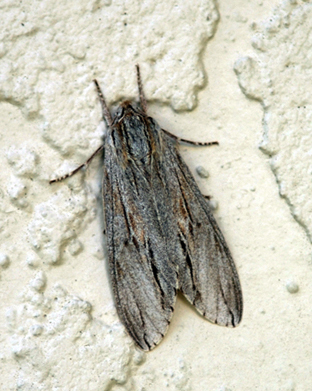
Isoparce cupressi, the baldcypress sphinx or cypress sphinx, is a moth of the family Sphingidae.

Sphinx asellus, the asellus sphinx moth, is a moth of the family Sphingidae. The species was first described by Walter Rothschild and Karl Jordan in 1903. It is known from pinyon-juniper woodland and similar arid areas in the US states of Colorado, Nevada, Utah, extreme south-western Wyoming, Arizona, New Mexico and south-western Texas.

Lintneria eremitus, the hermit sphinx, is a moth of the family Sphingidae. The species was first described by Jacob Hübner in 1823. It is found in the temperate areas of the eastern United States, north into southern Canada over the Great Plains. It prefers gardens and yards, but is common wherever the nectar and larval host plants are found. This moth is easily confused with the Canadian sphinx but these two moths do not typically co-occur.

Lintneria eremitoides, the sage sphinx, is a moth from the family Sphingidae. The species was first described by Herman Strecker in 1874. It is known from North America's sandy prairies in the Great Plains from Kansas south through central Oklahoma to Texas, and possibly west to Colorado and New Mexico, and as a rare stray to western Missouri.
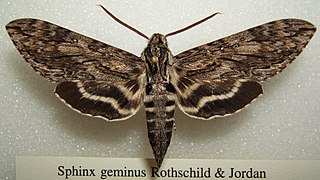
Lintneria geminus, the gemmed sphinx, is a moth of the family Sphingidae. The species was first described by Walter Rothschild and Karl Jordan in 1903. It is found from Mexico to Honduras and Nicaragua with an occasional stray into Texas.

Lintneria istar, the Istar sphinx moth, is a moth of the family Sphingidae. The species was first described by Walter Rothschild and Karl Jordan in 1903. It is found in mountains and pine-oak woodlands from southern Arizona east to southern Texas and south through Mexico to Guatemala.

Sphinx leucophaeata is a moth of the family Sphingidae.
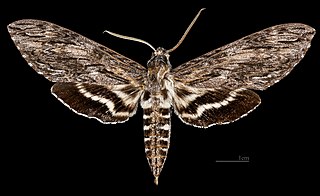
Lintneria lugens is a moth of the family Sphingidae.

Lintneria merops is a moth of the family Sphingidae.

Lintneria praelongus is a moth of the family Sphingidae.

Lintneria is a genus of moths in the family Sphingidae, containing the following species:

Sphinx chisoya, the chisoya sphinx, is a moth of the family Sphingidae. It is known from tropical and subtropical lowlands from southern Texas to Mexico.
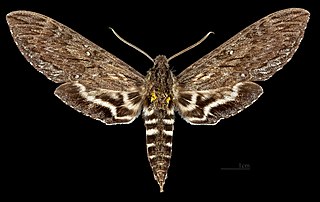
Lintneria aurigutta is a moth of the family Sphingidae. It is known from Peru, Bolivia and Argentina.
Lintneria balsae is a moth of the family Sphingidae. It is known from Mexico.
Lintneria biolleyi is a moth of the family Sphingidae. It is known from Costa Rica and Guatemala.
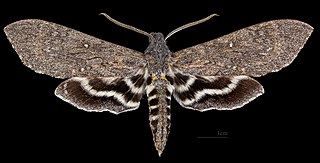
Lintneria maura is a moth of the family Sphingidae.
Lintneria pitzahuac is a moth of the family Sphingidae. It is known to be from Mexico.
Lintneria porioni is a moth of the family Sphingidae. It is known from Peru.

Lintneria pseudostigmatica is a moth of the family Sphingidae. It is known from Mexico.
Lintneria xantus is a moth of the family Sphingidae. It is known from Baja California and north-western Mexico.















